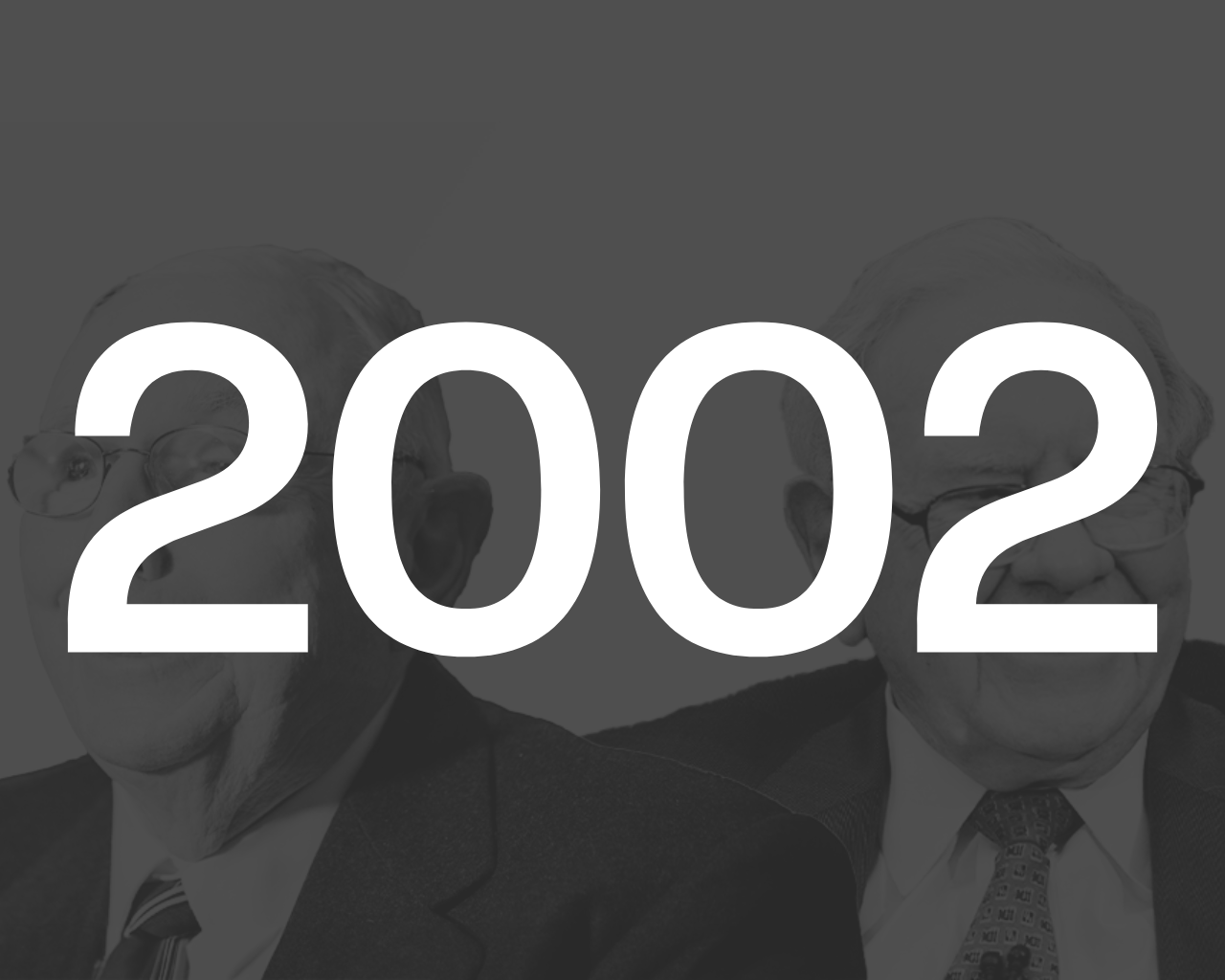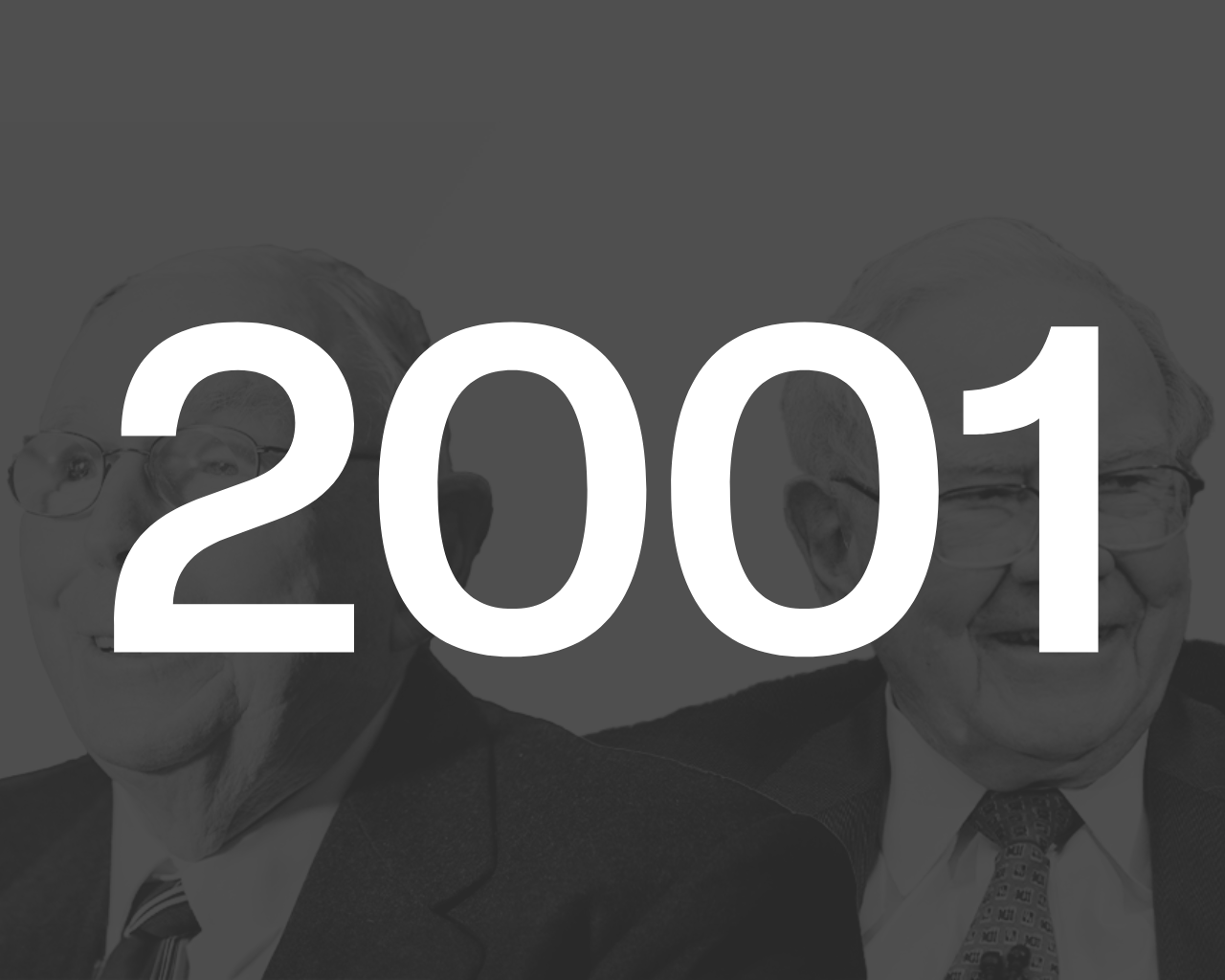1994
Click here to read the letter.🧠 Key Takeaways
If your approach is based on reacting to every macro event or chasing every new trend, you’ll always be investing from a place of fear—fear of change, fear of the unknown, fear of getting it wrong. The better approach is one rooted in discipline and conviction in your investments—where you focus on business fundamentals instead of whatever noise is being blasted in the headlines.
It’s better to own some of a great business than all of a bad business.
Success in investing comes from mastering the fundamentals—buying great businesses at reasonable prices, staying patient, and letting time do the heavy lifting. The same applies to running a business: stick to the basics, don’t get distracted, and the results will take care of themselves.
At some point, every great business matures to the point where it generates more cash than it can effectively put to use. When that happens, shareholders should expect to see that excess capital returned through dividends or share buybacks. But if a mature company isn’t returning cash to shareholders—and instead, management is plowing money into acquisitions or other ventures—it’s worth taking a closer look.
There are no style points in investing. A 10% return from a familiar, easy-to-understand company like McDonald's is the same as a 10% return from the hot biotech stock of the moment.
Sometimes your best investment is one you’ve already made.
✍️ Memorable Quotes
“We will continue to ignore political and economic forecasts, which are an expensive distraction for many investors and businessmen. Thirty years ago, no one could have foreseen the huge expansion of the Vietnam War, wage and price controls, two oil shocks, the resignation of a president, the dissolution of the Soviet Union, a one-day drop in the Dow of 508 points, or treasury bill yields fluctuating between 2.8% and 17.4%. But, surprise - none of these blockbuster events made the slightest dent in Ben Graham’s investment principles. Nor did they render unsound the negotiated purchases of fine businesses at sensible prices. Imagine the cost to us, then, if we had let a fear of unknowns cause us to defer or alter the deployment of capital. Indeed, we have usually made our best purchases when apprehensions about some macro event were at a peak. Fear is the foe of the faddist, but the friend of the fundamentalist.”
Trying to build a long-term investment strategy around endless “what ifs” is no way to go. What if interest rates go up? What if there’s a recession? What if a war breaks out?
You can come up with an infinite number of these scenarios, but if your approach is based on reacting to every macro event or chasing every new trend, you’ll always be investing from a place of fear—fear of change, fear of the unknown, fear of getting it wrong.
That kind of mindset leads to short-sighted decisions. The better approach is one rooted in discipline and conviction in your investments—where you focus on business fundamentals instead of whatever noise is being blasted in the headlines.
“It’s far better to own a significant portion of the Hope diamond than 100% of a rhinestone, and the companies just mentioned easily qualify as rare gems. Best of all, we aren’t limited to simply a few of this breed, but instead possess a growing collection.”
Simply put, it’s better to own some of a great business than all of a bad business. And the cool thing about the stock market is that you’re not limited to just a few—you can build a portfolio filled with as many great businesses as you can find.
“Ben Graham taught me 45 years ago that in investing it is not necessary to do extraordinary things to get extraordinary results. In later life, I have been surprised to find that this statement holds true in business management as well. What a manager must do is handle the basics well and not get diverted.”
In both investing and business, there’s often a temptation to chase outsized returns by taking big risks or trying to outsmart the market. But the reality is, you don’t have to do anything crazy to be successful.
Success comes from mastering the fundamentals—buying great businesses at reasonable prices, staying patient, and letting time do the heavy lifting. The same applies to running a business: stick to the basics, don’t get distracted, and the results will take care of themselves.
“Over time, the skill with which a company’s managers allocate capital has an enormous impact on the enterprise’s value. Almost by definition, a really good business generates far more money (at least after its early years) than it can use internally. The company could, of course, distribute the money to shareholders by way of dividends or share repurchases. But often the CEO asks a strategic planning staff, consultants or investment bankers whether an acquisition or two might make sense. That’s like asking your interior decorator whether you need a $50,000 rug.”
At some point, every great business matures to the point where it generates more cash than it can effectively put to use. When that happens, shareholders should expect to see that excess capital returned through dividends or share buybacks.
But if a mature company isn’t returning cash to shareholders—and instead, management is plowing money into acquisitions or other ventures—it’s worth taking a closer look.
Acquisitions aren’t necessarily bad, but they’re not always the best use of capital. A CEO with a big budget and an affinity for deal-making can easily justify spending shareholder money on acquisitions, even when they don’t really benefit the business.
Metrics like Return on Invested Capital (ROIC) and Return on Capital Employed (ROCE) will help you gauge management’s ability to put capital to work. If those stay strong, management may be on the right track.
But if those metrics start to slip, it’s a sign that shareholders would likely be better off getting some of that cash in the form of dividends or buybacks instead.
“Investors should remember that their scorecard is not computed using Olympic-diving methods: Degree-of-difficulty doesn’t count. If you are right about a business whose value is largely dependent on a single key factor that is both easy to understand and enduring, the payoff is the same as if you had correctly analyzed an investment alternative characterized by many constantly shifting and complex variables.”
Simply put, there are no style points in investing. A 10% return from a familiar, easy-to-understand company like McDonald's is the same as a 10% return from the hot biotech stock of the moment.
What matters is understanding what makes a company special and why it will endure—not trying to decipher some complex, obscure business just for the sake of feeling smart and sophisticated.
At the end of the day, your scorecard is measured in returns, not level of difficulty. You need to take your ego out of the equation.
“Before looking at new investments, we consider adding to old ones. If a business is attractive enough to buy once, it may well pay to repeat the process.”
Before adding a new position to your portfolio, take a look at what you already own—there’s a good chance one of your existing holdings is still worth buying. And if a stock was a great buy once, why wouldn’t it be a great buy again at the right price?
Allocating more money to your best ideas instead of constantly adding new stocks helps you stay focused and avoid spreading yourself too thin. The more positions you own, the harder it becomes to track them all effectively.
Plus, the more diversified your portfolio gets, the more your returns start to mirror the overall market—defeating the whole point of investing in individual stocks in the first place.
Put simply, sometimes your best investment is one you’ve already made.




Memorable quotes and key takeaways from the 2003 Berkshire Hathaway shareholder letter.